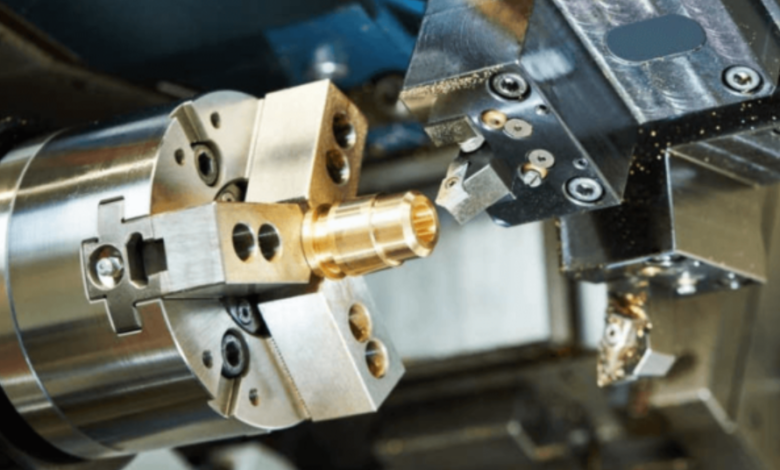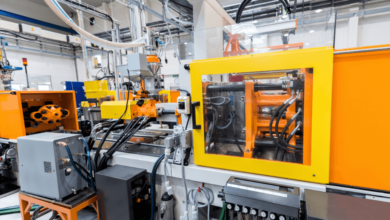CNC Turning Parts: Precision Components Powering Modern Manufacturing

In the age of advanced engineering and high-speed production, CNC turning parts have become integral to manufacturing processes across diverse industries. Whether you’re dealing with aerospace turbines, medical instruments, automotive shafts, or industrial machinery, precision-turned components form the structural and functional core of countless products. With the demand for consistent quality and tight tolerances, CNC turning offers a solution that blends speed, efficiency, and microscopic accuracy.
This article explores the significance of CNC turning parts, their applications, benefits, and what makes them a preferred choice for modern-day engineers and manufacturers.
What Are CNC Turning Parts?
CNC turning parts are components created using Computer Numerical Control (CNC) turning processes, where a cutting tool moves along a rotating workpiece to remove material and shape it into the desired form. These parts can be as simple as a smooth cylindrical rod or as complex as intricate valve components with internal threads and tight tolerances.
The process uses lathes equipped with CNC technology, where the software dictates tool movement, rotation speed, and depth of cuts. The result is a highly repeatable manufacturing method capable of producing thousands of identical parts with minimal deviation.
See also: Smart Home, Smart Living: How Tech Is Transforming Home Upgrades
Characteristics of CNC Turning Parts
CNC turning parts are renowned for the following traits:
- Dimensional Precision: Tolerances can go as tight as ±0.001 mm.
- Consistent Surface Finish: Often achieving a surface roughness (Ra) of 0.8 µm or better.
- Material Versatility: Can be made from metals, plastics, and composite materials.
- High Repeatability: Ensures every piece matches the CAD drawing exactly.
- Complex Geometry: Threaded holes, grooved sections, tapers, or undercuts can be executed with precision.
Common Materials Used
One of the strengths of CNC turning lies in its compatibility with a wide range of materials. Some commonly used materials for CNC turning parts include:
- Aluminum: Lightweight, corrosion-resistant, and easy to machine.
- Stainless Steel: Ideal for applications requiring strength and corrosion resistance.
- Brass: Offers good machinability and is often used in decorative or precision fittings.
- Titanium: Known for its strength-to-weight ratio and corrosion resistance.
- Engineering Plastics: Materials like PEEK, PTFE, and Nylon are often turned for specialized parts.
Each material requires specific speeds, feeds, and tool types, all of which are meticulously programmed into the CNC machine.
Applications of CNC Turning Parts
Due to their precision and adaptability, CNC turning parts are utilized in an array of sectors:
1. Aerospace
In aerospace, even minor inconsistencies can lead to critical failure. CNC turning is used to produce components such as bushings, sleeves, and fasteners that require extreme accuracy and reliability.
2. Automotive
From transmission components to engine pistons and steering parts, CNC turning parts are essential in maintaining the performance and safety of vehicles.
3. Medical Devices
Surgical instruments, orthopedic pins, and implantable components are often crafted using CNC turning to ensure biocompatibility and strict hygiene standards.
4. Oil and Gas
This industry demands components that can withstand harsh conditions. Turned parts like pressure fittings, couplings, and valves must be both strong and corrosion-resistant.
5. Electronics
Small CNC turning parts such as connectors, contact pins, and enclosures are common in consumer electronics and telecommunication devices.
Benefits of Using CNC Turning for Part Manufacturing
✅ Unmatched Precision
CNC turning ensures every part matches exact CAD specifications, crucial for high-performance assemblies.
✅ Cost-Effective for Medium to Large Volumes
Although the initial setup can be costly, the per-unit cost drops significantly for higher production volumes.
✅ Faster Lead Times
Automation reduces human error and accelerates the manufacturing process, making CNC turning parts a go-to solution for urgent deadlines.
✅ Customization Flexibility
Changes to part designs can be implemented quickly in the software, with minimal setup time, allowing rapid prototyping and product iterations.
✅ Scalable Production
Whether it’s a batch of 50 or 50,000 parts, CNC turning offers scalability without sacrificing consistency.
Types of CNC Turning Operations
To achieve the complexity found in many CNC turning parts, manufacturers employ several operations:
- Facing: To create a smooth surface perpendicular to the axis.
- Turning: To reduce the diameter of the workpiece.
- Threading: For producing internal or external threads.
- Grooving: Adding channels or indentations.
- Parting/Cutting-Off: Separating a part from the workpiece.
- Boring/Drilling: Creating internal holes with precise dimensions.
Multi-axis CNC lathes can even perform operations on multiple sides without unloading the workpiece, improving efficiency and accuracy.
Factors to Consider When Ordering CNC Turning Parts
When sourcing CNC turning parts for your business or project, consider these key aspects:
1. Tolerances Required
Discuss the dimensional accuracy needed for your parts—this determines the complexity of tooling and inspection processes.
2. Material Selection
Choose a material suitable for your end application, taking into account mechanical properties, weight, corrosion resistance, and cost.
3. Volume Requirements
Some shops specialize in small prototype runs, while others cater to mass production. Choose a supplier aligned with your scale.
4. Surface Finish
Depending on whether parts are decorative, structural, or functional, you may need specific finishes like polishing, anodizing, or powder coating.
5. Lead Time
Inquire about turnaround time, especially if you’re operating on a tight production schedule or need iterative prototypes.
Future Trends in CNC Turning Parts Manufacturing
The world of CNC turning is not static—it continues to evolve with technological innovations. Here are a few key trends:
🛠️ Integration of AI & IoT
Smart CNC machines can now detect tool wear, predict failure, and automatically adjust speeds and feeds, enhancing part quality.
Conclusion
CNC turning parts play a pivotal role in the production of components that demand exceptional precision, reliability, and repeatability. They are found in everything from your car’s transmission to the electronic devices you use daily. With the advancement of CNC technology, the complexity, speed, and accuracy of turned parts continue to reach new heights.
For engineers, designers, and businesses looking for a reliable and efficient method to produce intricate components, CNC turning remains a time-tested solution. Whether it’s for a prototype, small batch, or large-scale production, investing in high-quality CNC turning parts ensures product integrity, improved performance, and long-term success.






